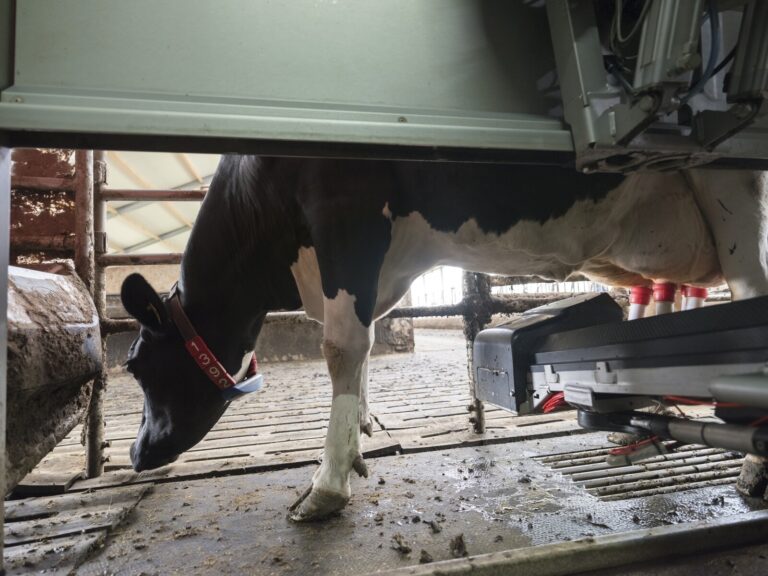Through robotization, dairy farms can exponentially scale up their production, and also improve the sacrificed quality of life of dairy farmers... and cows.

Generational renewal. Keysi Montechiari, a young biologist and entrepreneur who is currently the general manager of Montechiari Agroindustria Argentina's dairy farm, said that before, she did not feel any attraction for her family's dairy business. However, when she was finishing her university studies and planning her doctorate, the appearance of eight robots in the family dairy motivated her to change her plans.
In 2019, Keisy did a three-month internship at a Lely farm in the Netherlands, the same company that, founded in 1948, invented robotic milking three decades ago, which it markets in 50 countries.
Although Lely is the world market leader, it is not alone in selling automated dairy systems. The list is long: DeLaval, GEA Group Aktiengesellschaft, Hokofarm Group, Fullwood Packo, Milkomax Solutions laitières, BouMatic, AktivPuls GmbH, Waikato Milking Systems NZ LP and Dairymaster.
The first robotic milking plant in Latin America was set up in Argentina
The robotization of dairy farms in Latin America originated in Argentina in 2015, when Miguel Taverna, from the National Dairy Program of the National Institute of Agricultural Technology (INTA), set up the Experimental Station of the aforementioned entity in the city of Rafaela, province of Santa Fe.
There are currently more than 230 milking robots on Argentine dairy farms.
"Without these technologies it is very likely, I would not have joined the family business; no young person likes to be milking on a Saturday morning", explained Keysi with youthful freshness before the panel "CREA Robotic Tamber" at the last CREA Dairy Congress, in the Argentine city of Rosario.
The CREA Tambero Robótico group is made up of 14 companies from three Argentine provinces that control 65 robots. It is a member of the Asociación Argentina de Consorcios Regionales de Experimentación Agrícola (AACREA), which brings together the Argentine CREAs. A similar experience is being developed in Uruguay with FUCREA.
Robotization quadruples productivity
Proof of the leap into the future of robotization was presented by Taverna in CREA magazine: "It multiplies by three and a half, or four, the average productivity of Argentine dairy systems, while more than doubling the average productivity of companies in the top quartile".
The small INTA Rafaela unit achieved a productivity of 30,000 liters of milk per hectare and per cow.
Taverna stressed that, according to international bibliography, this technology is very competitive "when exceeding 400,000 to 450,000 liters of milk per worker per year: something perfectly feasible.".
The robotic milking system not only replaces the operating personnel. With dedicated software it also optimizes the real traceability of the status, health and productivity of each individual animal.
Before the CREA panel, Hernán Harispe told the CREA panel that his family dairy farm of 40 hectares produces 30,000 liters of milk per hectare per year. For now, the 60% is robotized. But, he assured that at the end of the process they will keep all the personnel.
And he agreed with Keisy: "The quality of life is going to improve significantly. It's no longer going to be necessary to get up in the early morning to milk.".



